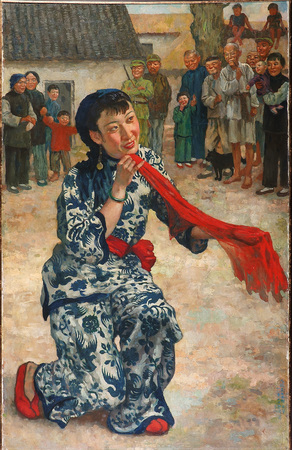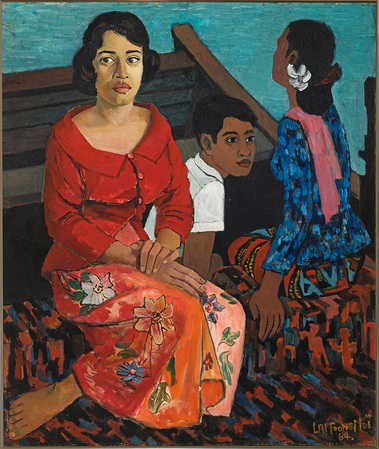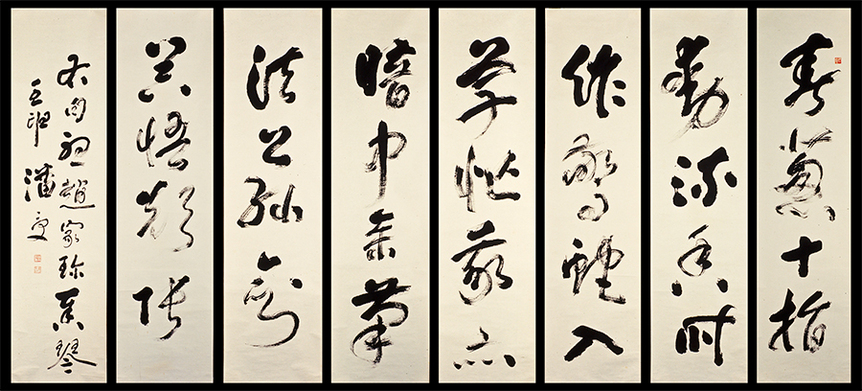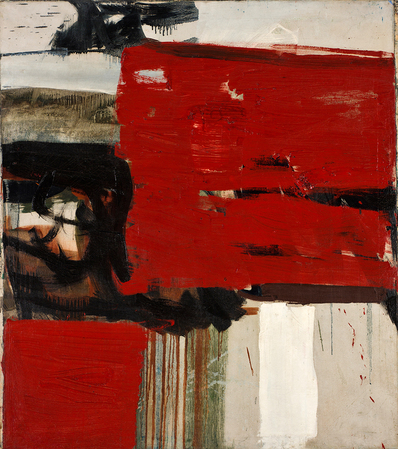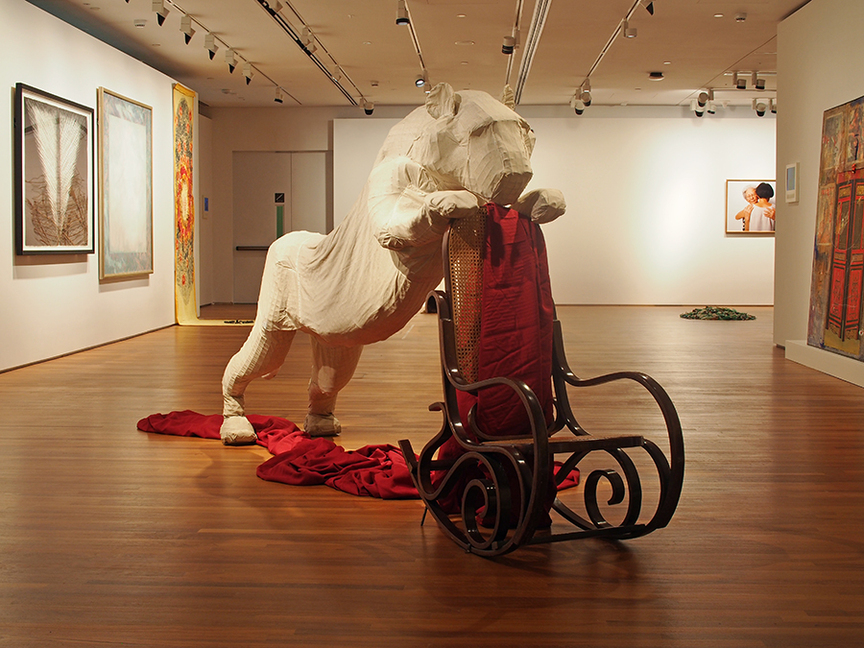
R
E
V N
E
X
T
After a decade-long project costing SGD 532 million (USD 369 million), the National Gallery Singapore (NGS) opened its doors in November 2015 as the first public museum in the world dedicated to the research of Southeast Asian modern art. The museum is currently holding two major, long-term inaugural exhibitions on the development of the art histories of Singapore and Southeast Asia. “Between Declarations and Dreams” (previously reviewed here) is an overview of Southeast Asian modern art from the 19th century, while “Siapa Nama Kamu? Art in Singapore Since the 19th Century” more specifically examines the art history of Singapore.
“Siapa Nama Kamu?” is Malay for “What is your name?” and references Singapore artist Chua Mia Tee’s iconic work National Language Class, painted in 1959—the year Singapore gained independence from British colonial rule. “Siapa Nama Kamu?” is being held in the 2,000-square-meter DBS Singapore Gallery at the NGS, where nearly 400 works are on display, grouped chronologically under several socio-historical themes, which are described below.
“Siapa Nama Kamu?” may be somewhat overloaded in content, but the exhibition affords the unusual opportunity to see a comprehensive and astonishing range of artifacts, paintings, photographs, sculpture, installations and more, as the evolution of Singapore’s artistic heritage is delineated with clarity and verve. The exhibition will be up until 2020.
See a slideshow of some representative works here.
HEINRICH LEUTEMANN, Unterbrochene Straßenmessung auf Singapore (Interrupted Road Surveying in Singapore), c. 1865, wood engraving, 20.8 × 29.4 cm. Collection of National Museum of Singapore. Courtesy National Heritage Board, Singapore.
Tropical Tapestry: 1890s – 1930s
Works in this section include colonial-era paintings, landscapes, portraits and botanical studies, as well as maps and manuscripts. This selection includes works by European as well as early 20th-century Singaporean painters, the latter whose practices sparked the beginnings of modern art in their own country.
Nanyang Reverie: 1930s – 1970s
“Nanyang,” meaning “south seas,” was an artistic movement in Singapore without definitive style. Its artists integrated indigenous cultural motifs and techniques in their sometimes romantic imagery of the nation’s land and its people, as they sought to define a Singaporean artistic character through idylls of color and naturalism.
Real Concerns: 1950s – 1970s
Following the Second World War, a strong swell of nationalism throughout the Southeast Asian region inspired a wave of social realism in the arts. After Singapore became self-governing in 1959, artistic themes dwelt on the effects of modernization and economic progress, as the country’s identity underwent thoughtful re-examination.
Tradition Unfettered: 1940s – 1980s
As an integral aspect of its research directive, the NGS studies the foundations and influences of ink painting. This discrete component of the exhibition includes a number of scrolls in classical Chinese style, alongside unconventional directions in ink painting—including those by local artists who since the 1960s have developed a distinctive “Singapore ink” style.
New Languages: 1960s – 1980s
The experimental and abstractive works from this period reflect the practices of Singapore’s second-generation artists who, influenced by Western artistic trends, aimed to move beyond the foundations and constraints laid down by the country’s “pioneer” generation of artists.
Shifting Grounds: 1980s – Present
The varied and speculative works in this space embrace a wide range of mediums, including video, sculpture and installation, and reflect a broad spectrum of innovative practices by Singapore artists, from the avant-garde to the conceptual to performance art.
The exhibition “Siapa Nama Kamu?” opens with a meticulous exploration of those Western artistic influences that first informed Singapore’s contemporary art scene; gradually, through its graceful exposition of Singapore’s historical, social and artistic transformations, the show ultimately reveals the country’s subtle growth towards a unique aesthetic identity.

